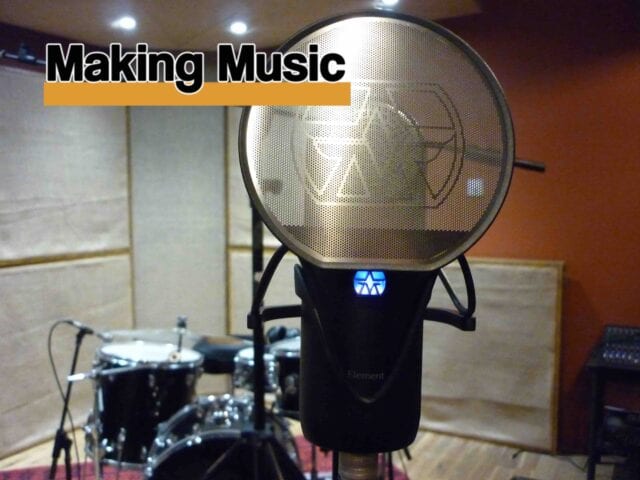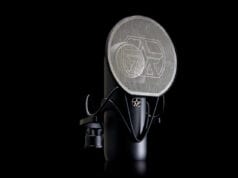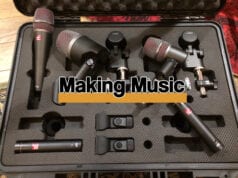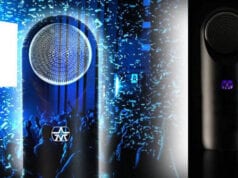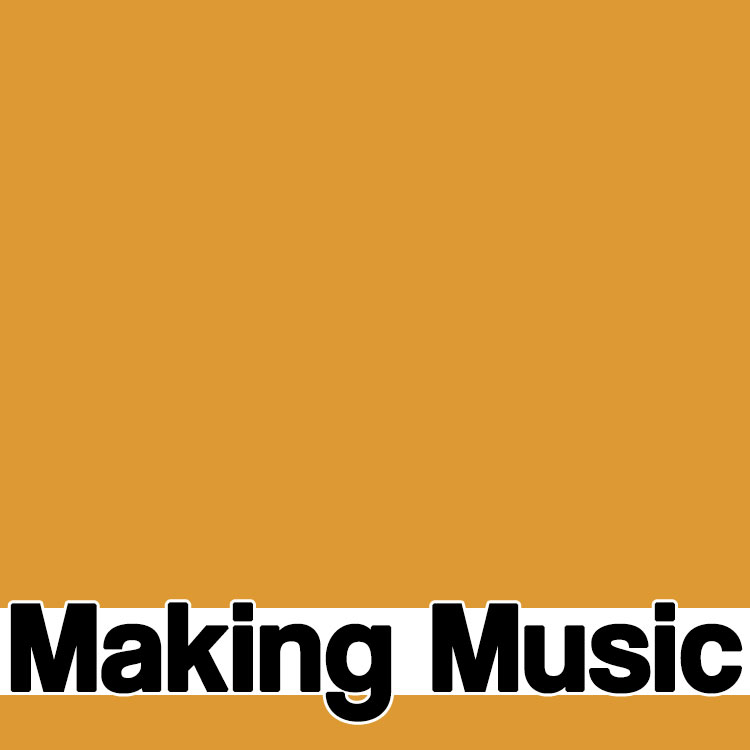Last Updated on April 3, 2022 by Andrew Culture
Available from: Aston Microphones
Cost (at time of publication): £159/€179/$199
A Brief Introduction
Aston Microphones are troublemakers. I don’t mean that in a bad way, I just mean they want to shake things up a bit. They haven’t released a glut of ‘identikit’ microphones over their five-year existence, but when they do release a product it always has something different or special about it. And (in my humble opinion, dear reader) they’re always good.
The Spirit and Origin, their first microphones to be launched, had a flexible waveform spring head around the basket to act as protection and all were finished in tumbled stainless steel. The Stealth was a large-diaphragm dynamic that used phantom power to engage an onboard preamp and had four different voicings. Their small-diaphragm condenser, the Starlight, had a laser targeting system for heaven’s sake!
This also follows the ethos of the company. They design and build in the UK, as their aim is to have home-grown products revered in years to come and to have a heritage pedigree as the Germans have with Neumann. They make a point of their green credentials as well, using recycled PET in their Aston Halo microphone screen and minimal but recyclable packaging.
The Process
Up until now, their prototypes had been blind tested by a panel of audio professionals known as the Aston 33, named after the number of people in the first test group for the earliest products. As the range grew, so did the numbers on the panel but, for the Element, Aston decided to go even further and invited the great, microphone buying public on board as well.
Using a series of recorded files, this 4000 strong development family, listened to recordings of male & female vocals and acoustic guitar using a number of different microphones, including prototypes of the Element, ranking what they heard and giving comments on why they liked one recording over another.
This informed Aston over the ensuing months and they tweaked the voicing based on each set of results until the design was finalised. The first ‘People’s Microphone.”

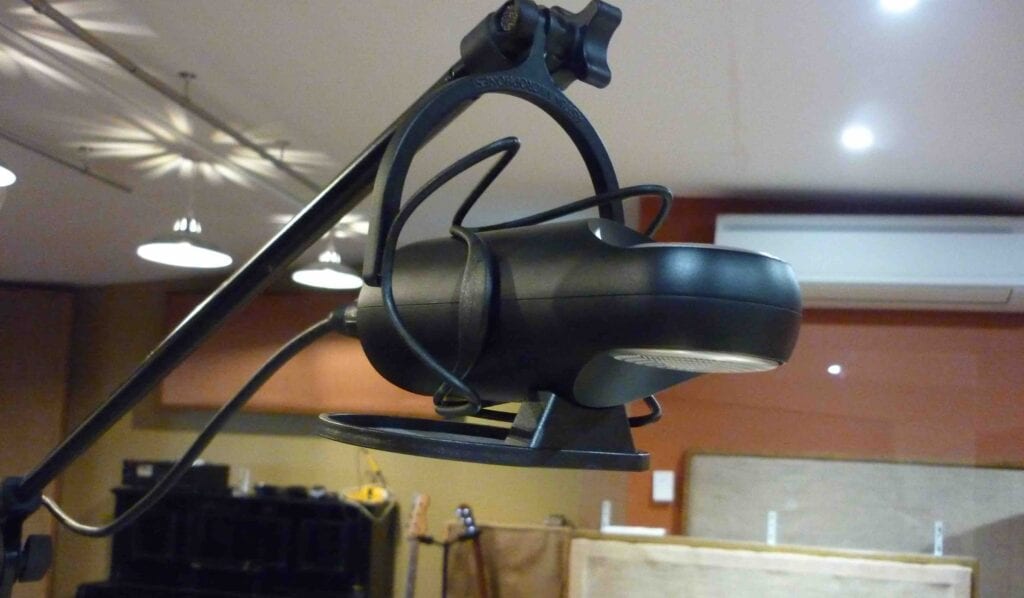
In One’s Element
The microphone arrived for review in a cardboard shop-shelf box and inside were 3 other smaller boxes: one for the microphone, one for the cradle and one for the pop filter. True to their aim of reducing environmental impact, the only piece of plastic insight was that used to wrap the microphone itself and I would suggest that, with the addition of a small amount of silica, this was purely to keep moisture away during transportation. The main box is proudly adorned with the phrase “Your complete recording solution.”
So, is it?
Billed as a studio microphone, the one and a half-inch diaphragm has a Mylar membrane and a side-address capsule that is based on the dynamic microphone principle of a moving coil design. It’s incredibly light though, which is somewhat off-putting when you first pick it up but the casing and grille is made of sturdy metal. There are no pads or filters, but the front and rear have a smooth waveguide-type styling under the grille to help direct sound to where it needs to be. How big a part this plays on the sound of the microphone is hard to tell, but it exhibits a tight cardioid pattern (similar to the Origin) which will be great for reducing any room reflection or spill from other instruments.

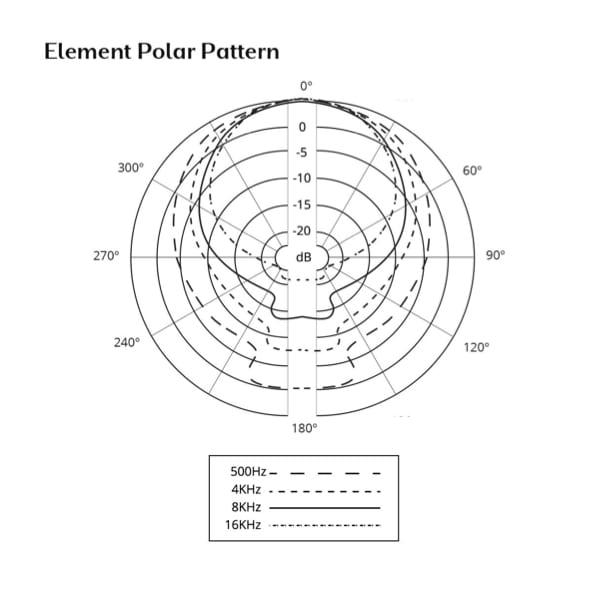
The cradle and pop shield are stock Aston products to give the package a bespoke feel and both are made out of rigid plastic. Once slipped into the cradle, clips locate into two slots on the mic and can be secured with one hand. It holds the mic remarkably well, allowing it to be positioned accurately, although you must ensure it is clipped in properly.
The pop shield attaches by the use of some strong magnets to the front of the mic and the grille is a fine metal mesh, with the Aston logo on it. As it fits so well, the pop shield can also be attached upside down for those times you are recording anything that doesn’t require it. These are small but beneficial touches that are, as far as I know, unique to the Element and just show the thought that the designers have put into the product.
The capsule technology is something that Aston has named Ridyon, being a portmanteau of sorts, derived from the 3 types of microphones that the Element takes its cues from. The natural sound of a ribbon, punchy bass and rejection of a dynamic and the sensitivity and performance of a condenser.

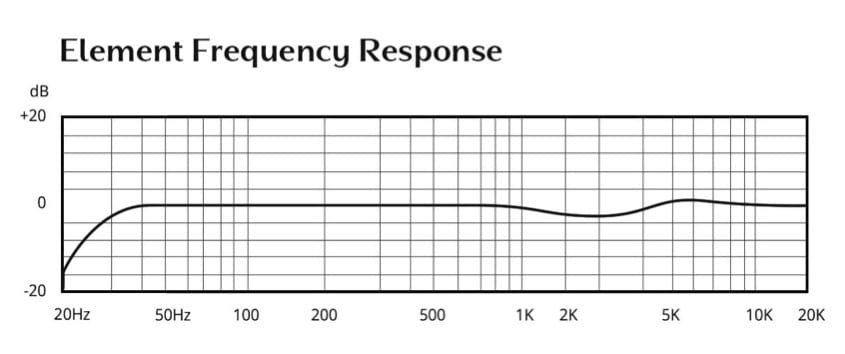
The frequency plot shows an almost flat response, with the low-end roll-off starting around 40Hz but the high end extending well past 20kHz. There is a slight dip at around 3kHz and a gentle bump at 7kHz, which would be considered useful for vocal recording to reduce any honky/nasal sound and to add presence respectively.
The key to that extended high end is down to the onboard active circuitry, which needs phantom power to operate, as well as a light, low-impedance moving coil that helps the microphone to pick up fast transient detail. With phantom power engaged, the small Aston badge on the front of the body glows a purple colour and, while it looks cool, this is also part of the preamp biasing circuit that, along with a humbucking circuit, means the Element has low self-noise and is incredibly quiet.
On Test
For the listening process, I wanted to have some fresh ears from someone who didn’t know the background to the mic so I roped in Jake and Jamie, a couple of my recording engineer compatriots at Punch Studios. As there was a drum kit conveniently set up in the studio, we first set the Element up as a mono overhead alongside a 1970s Neumann U87. We didn’t do this to make it a shoot-out per se, but the U87 is used as an all-around mic in the studio and so the sound is familiar.
The Element did a good job over the kit, picking out the fullness of the toms and snare while sounding smooth in the high end of the cymbals. The mid-range wasn’t quite as upfront as the U87 and had a slightly scooped feel to it, but it held its own in covering the wide range of frequencies and transients from the kit. We also tried it as a mono room mic, around five feet back from the kit and it sounded great with some 1176-style smash compression, blended back in with the close and overhead mics.

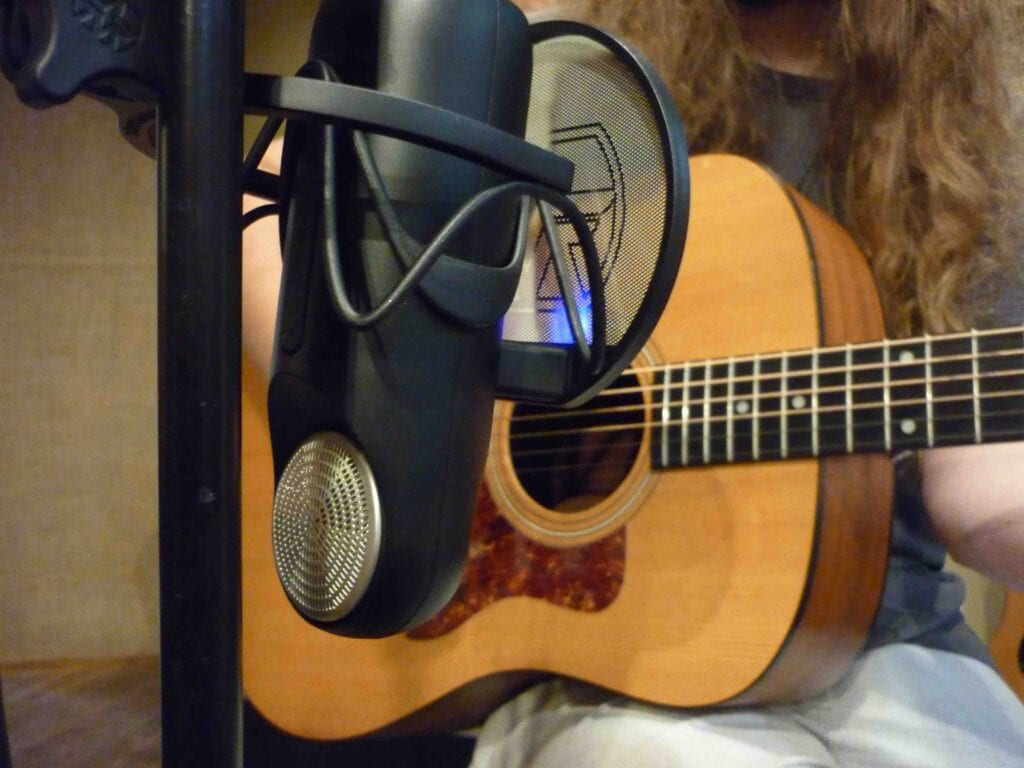
Moving on to acoustic guitar, we placed the mic about two-feet back from the instrument and aimed it around the twelfth fret where it gave a solid performance, with the high end sounding just right, without the harsh, zingy-ness that some condensers impart to fingers on steel-strings. The low-end however accentuated a slightly thumpy sound, but switching in the high pass filter on the desk soon balanced that out. If you don’t have a HPF on the way into your recording set-up, this can be done equally as well using a software EQ to clean up the low frequencies.
On male spoken vocals, the proximity effect really showed itself but the Element produced a lovely warm and rounded ‘made for radio’ sound of a large-diaphragm dynamic and by backing off the mic a little the low end was controlled much better. We didn’t have a female voice to try the microphone on, but I would presume that position and the proximity effect could be put to really good use to warm up the lower register without having to resort to EQ.
The Element of Surprise

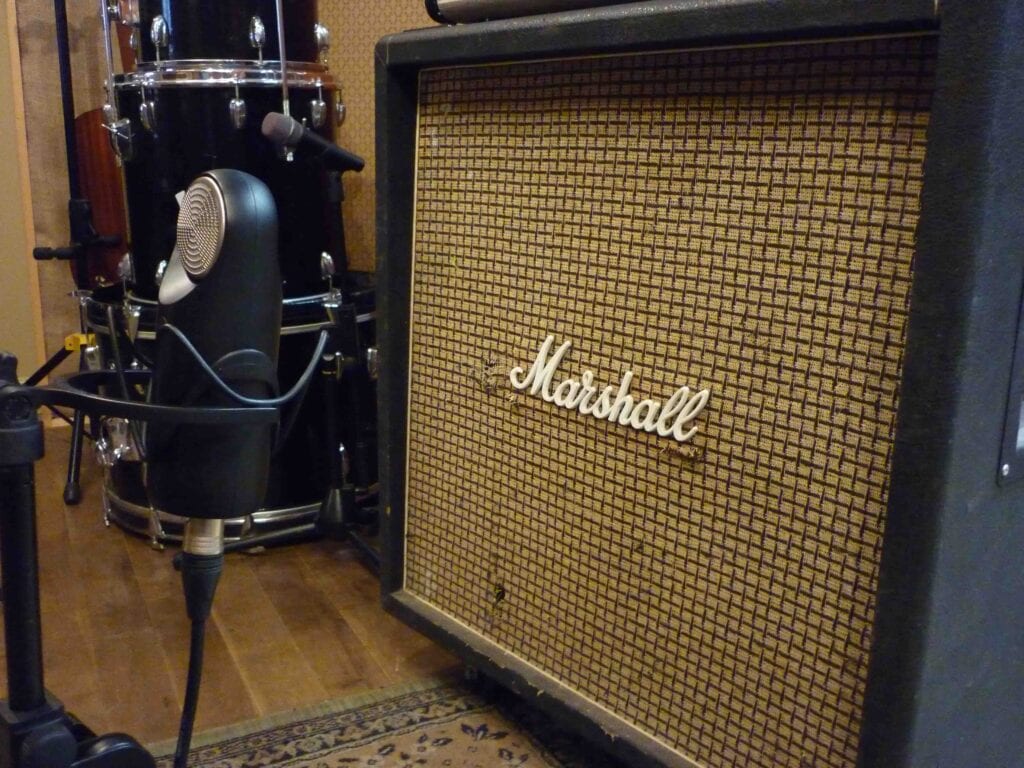
This idea of distance was experimented with next on both electric guitar and bass cabs. Placed around an inch and a half from the cloth, the low end was a little too overbearing on the guitar and unbalanced the frequencies captured overall. However, moving the mic back to about two feet let the cab breathe and the Element captured an excellent sound, which kept all it’s weight but was now that much closer to what we heard in the room. The ribbon voicing kept the top end smooth without any aggressiveness creeping in. This was our favourite instrument/position combo of the tests, with no additional desk EQ needed.
On bass guitar, the results were a little more subjective and we preferred the extra low end from the up-close position, but this would all come down to personal choice as well as the genre of music you are recording for.
At the end of our listening sessions, I asked Jake and Jamie for their thoughts. Both agreed that the Element really held its own, especially when the position was adjusted and it didn’t sound bad compared to the U87, it just sounded different. When I told them that the cost of the mic, cradle and pop shield was under £160 they couldn’t quite believe it, pitching it more towards the top end of the £400+ range.
In Summary
The Element certainly has its own sound but is it a genuine all-rounder? I think that it’s as close as anything comes and especially in this price range. The styling is interesting, the build quality is excellent and the inclusion of a made-to-measure cradle and pop shield makes it a great package.
Sound-wise, the high end is detailed and smooth without suffering from cheap condenser brittle-ness and there’s low end for miles. It’s this tendency to be a bit OTT with the lows that is the only thing that could make it tricky to work with, if you have to back off the microphone from the source and the acoustics in your room aren’t that great. However, the tight cardioid pattern and waveguide certainly make this less of an issue and I’d rather have too much than too little, as a HPF can be engaged either pre or post-recording without degrading the sound quality at all.
The price sounds cheap, but this is far from a ‘cheap’ microphone sound. How Aston has managed all this and made it as affordable as they have is beyond me. It’s a little too early to give it any ‘Microphone Of The Decade’ awards, but this is a fantastic package and a genuinely great microphone. I can’t wait to see what Aston do next.
Thanks to Jamie Robertson, Jake Aylward and Rayna Vandel for their contributions and making all the noises and to Punch Studios for the use of the studio.



